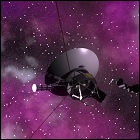 NASA engineers complete a multi-year project to completely reprogram Voyager 2 during the unmanned space probe’s five-year journey from Saturn to Uranus. A planet receiving only a fraction of the sunlight that made photography possible at Jupiter and Saturn, Uranus requires much longer exposures, slower camera shutter speeds, and incredibly precise camera tracking. To compensate for the extreme lag in comunications to and from Uranus, data compression algorithms are devised using techniques that simply didn’t exist at the time of Voyager 2’s construction and original programming, but the compression scheme is an all-or-nothing proposition: it ties up Voyager 2’s backup computer, meaning that a failure of the main computer during a critical maneuver could send the probe off-course, perhaps even colliding with the bodies it intends to study.
NASA engineers complete a multi-year project to completely reprogram Voyager 2 during the unmanned space probe’s five-year journey from Saturn to Uranus. A planet receiving only a fraction of the sunlight that made photography possible at Jupiter and Saturn, Uranus requires much longer exposures, slower camera shutter speeds, and incredibly precise camera tracking. To compensate for the extreme lag in comunications to and from Uranus, data compression algorithms are devised using techniques that simply didn’t exist at the time of Voyager 2’s construction and original programming, but the compression scheme is an all-or-nothing proposition: it ties up Voyager 2’s backup computer, meaning that a failure of the main computer during a critical maneuver could send the probe off-course, perhaps even colliding with the bodies it intends to study.

 Voyager 2 visits the third planet on its grand tour of the outer solar system, becoming the first and only man-made spacecraft to visit Uranus. Since the blue-green planet and its moon are tipped over, Voyager has fewer opportunities to gather images of the moons of Uranus, but a close pass by its innermost large satellite, Miranda, yields pictures of one of the stranger surfaces in the solar system: a moon that was ripped apart and melted back together in the distant past. The atmosphere of Uranus reveals almost no details to Voyager 2’s cameras in the scant visible light available this far from the sun, but ten new moons are discovered, and the planet’s elusive dark rings are captured in several images. With no other missions to Uranus in the pipeline, Voyager 2’s brief flyby remains the primary source of most of our knowledge of the seventh planet from the sun. It will now take Voyager 2 three years to reach Neptune, its final target.
Voyager 2 visits the third planet on its grand tour of the outer solar system, becoming the first and only man-made spacecraft to visit Uranus. Since the blue-green planet and its moon are tipped over, Voyager has fewer opportunities to gather images of the moons of Uranus, but a close pass by its innermost large satellite, Miranda, yields pictures of one of the stranger surfaces in the solar system: a moon that was ripped apart and melted back together in the distant past. The atmosphere of Uranus reveals almost no details to Voyager 2’s cameras in the scant visible light available this far from the sun, but ten new moons are discovered, and the planet’s elusive dark rings are captured in several images. With no other missions to Uranus in the pipeline, Voyager 2’s brief flyby remains the primary source of most of our knowledge of the seventh planet from the sun. It will now take Voyager 2 three years to reach Neptune, its final target. NASA has to borrow some of its own spare parts back from the Smithsonian Air & Space Museum to begin engineering mock-up work on the unmanned Venus radar mapping probe Magellan. As JPL works on modifications to a backup central bus component left over from the Voyager program, a physical copy of that bus from an engineering backup of the Voyager spacecraft is loaned back to JPL, shipped to Pasadena from Washington, D.C. (This loan saves JPL the trouble of building another replica of the bus, the central hub of the spacecraft containing its computer and electrical systems, which could add significant cost to the preparations.) The real Magellan, due to be launched soon after the currently grounded space shuttle program resumes, will cut costs by incorporating unused backup equipment from its predecessors, including a Voyager central bus and high-gain antenna, a medium-gain antenna spare from the Mariner missions to Mars, and a Galileo data handling system.
NASA has to borrow some of its own spare parts back from the Smithsonian Air & Space Museum to begin engineering mock-up work on the unmanned Venus radar mapping probe Magellan. As JPL works on modifications to a backup central bus component left over from the Voyager program, a physical copy of that bus from an engineering backup of the Voyager spacecraft is loaned back to JPL, shipped to Pasadena from Washington, D.C. (This loan saves JPL the trouble of building another replica of the bus, the central hub of the spacecraft containing its computer and electrical systems, which could add significant cost to the preparations.) The real Magellan, due to be launched soon after the currently grounded space shuttle program resumes, will cut costs by incorporating unused backup equipment from its predecessors, including a Voyager central bus and high-gain antenna, a medium-gain antenna spare from the Mariner missions to Mars, and a Galileo data handling system.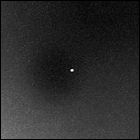 From within 500 million miles, cameras aboard NASA’s Voyager 2 unmanned space probe can now get a better look at planet Neptune than is possible with ground-based telescopes on Earth – even though, at present, that means a tiny disk only eight pixels across in images measuring 800 x 800 pixels. Voyager 2 is still over a year away from its closest encounter with Neptune, and even its own best photos don’t reveal any detail in the blue-green planet’s atmosphere. What is known is that, despite receiving less than half the sunlight and heat of the next innermost planet, Uranus, Neptune maintains the same temperature as Uranus. This means that Neptune is generating more heat than it receives from the sun.
From within 500 million miles, cameras aboard NASA’s Voyager 2 unmanned space probe can now get a better look at planet Neptune than is possible with ground-based telescopes on Earth – even though, at present, that means a tiny disk only eight pixels across in images measuring 800 x 800 pixels. Voyager 2 is still over a year away from its closest encounter with Neptune, and even its own best photos don’t reveal any detail in the blue-green planet’s atmosphere. What is known is that, despite receiving less than half the sunlight and heat of the next innermost planet, Uranus, Neptune maintains the same temperature as Uranus. This means that Neptune is generating more heat than it receives from the sun.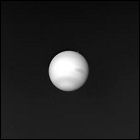 For the first time, images transmitted to Earth by NASA’s unmanned Voyager 2 space probe reveal visible cloud features in the atmosphere of Neptune, from a distance of 185,000,000 miles. This is a welcome relief to mission scientists who felt let down by a lamentable lack of any atmospheric detail in the clouds of Uranus, a planet visited by Voyager 2 in 1986. In the months ahead, even more detail will be revealed in Neptune’s upper atmosphere.
For the first time, images transmitted to Earth by NASA’s unmanned Voyager 2 space probe reveal visible cloud features in the atmosphere of Neptune, from a distance of 185,000,000 miles. This is a welcome relief to mission scientists who felt let down by a lamentable lack of any atmospheric detail in the clouds of Uranus, a planet visited by Voyager 2 in 1986. In the months ahead, even more detail will be revealed in Neptune’s upper atmosphere. Images transmitted to Earth by NASA’s unmanned Voyager 2 spacecraft, from a distance of 129,000,000 miles, reveal a consistent feature in Neptune’s atmosphere, an oval-shaped storm system near the Neptunian equator very similar in size and position to the Great Red Spot on Jupiter. This storm, quickly nicknamed the Great Dark Spot, allows Voyager scientists to estimate Neptune’s rotational period much earlier than expected. At the distance between Voyager 2 and Neptune, the smallest features on the planet that can be seen are at least 2,400 miles across, meaning the newly detected storm system is gigantic.
Images transmitted to Earth by NASA’s unmanned Voyager 2 spacecraft, from a distance of 129,000,000 miles, reveal a consistent feature in Neptune’s atmosphere, an oval-shaped storm system near the Neptunian equator very similar in size and position to the Great Red Spot on Jupiter. This storm, quickly nicknamed the Great Dark Spot, allows Voyager scientists to estimate Neptune’s rotational period much earlier than expected. At the distance between Voyager 2 and Neptune, the smallest features on the planet that can be seen are at least 2,400 miles across, meaning the newly detected storm system is gigantic.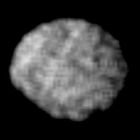
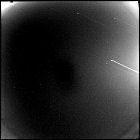 NASA announces the confirmation of what are believed to be partial rings around planet Neptune, as discovered in images taken by the unmanned Voyager 2 space probe. The ring arcs are found in close proximity to several new satellites, also spotted in Voyager 2 images, which are too small to have been seen form Earth-based telescopes. Ground-based telescopes had led scientists to believe that they would find partial rings, or complete dark rings, at Neptune; at this time, however, and at a distance of 13 million miles, what the project scientists don’t expect is that the rings will be revealed to completely encircle the planet within mere weeks.
NASA announces the confirmation of what are believed to be partial rings around planet Neptune, as discovered in images taken by the unmanned Voyager 2 space probe. The ring arcs are found in close proximity to several new satellites, also spotted in Voyager 2 images, which are too small to have been seen form Earth-based telescopes. Ground-based telescopes had led scientists to believe that they would find partial rings, or complete dark rings, at Neptune; at this time, however, and at a distance of 13 million miles, what the project scientists don’t expect is that the rings will be revealed to completely encircle the planet within mere weeks.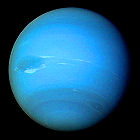 The unmanned space probe Voyager 2, almost exactly 12 years after leaving Earth, visits its last planet in the solar system, Neptune. Since mission planners have no further targets for Voyager, they have a free hand in picking its final destinations. An extremely close trajectory over Neptune’s north pole, bringing Voyager 2 within 18,000 miles of the cloudtops of the solar system’s windiest planet, deflects Voyager downward behind Neptune for a close look at its large moon, Triton. Six new moons are discovered, and the “ring arcs” that astronomers have theorized for years turn out to be complete rings made of extremely dark material. After the surprisingly featureless face of Uranus, Neptune proves to be unexpectedly active, with a large dark storm dominating its atmosphere.
The unmanned space probe Voyager 2, almost exactly 12 years after leaving Earth, visits its last planet in the solar system, Neptune. Since mission planners have no further targets for Voyager, they have a free hand in picking its final destinations. An extremely close trajectory over Neptune’s north pole, bringing Voyager 2 within 18,000 miles of the cloudtops of the solar system’s windiest planet, deflects Voyager downward behind Neptune for a close look at its large moon, Triton. Six new moons are discovered, and the “ring arcs” that astronomers have theorized for years turn out to be complete rings made of extremely dark material. After the surprisingly featureless face of Uranus, Neptune proves to be unexpectedly active, with a large dark storm dominating its atmosphere.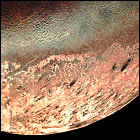 As scientists marvel over the latest data and pictures from Voyager 2 as it leaves Neptune, images of the planet’s large moon Triton prove to be jaw-dropping. Active geysers blast dark material – possibly evidence of cryovolcanism – over the moon’s mottled surface, and an atmosphere is measured. Virtually no craters caused by meteor impacts are spotted, meaning that Triton’s surface is geologically active – all completely new discoveries to Earth-based scientists. Perhaps the most frustrating part of all of the new information is that no further missions to Neptune are in serious consideration by NASA to follow up on Voyager 2’s discoveries.
As scientists marvel over the latest data and pictures from Voyager 2 as it leaves Neptune, images of the planet’s large moon Triton prove to be jaw-dropping. Active geysers blast dark material – possibly evidence of cryovolcanism – over the moon’s mottled surface, and an atmosphere is measured. Virtually no craters caused by meteor impacts are spotted, meaning that Triton’s surface is geologically active – all completely new discoveries to Earth-based scientists. Perhaps the most frustrating part of all of the new information is that no further missions to Neptune are in serious consideration by NASA to follow up on Voyager 2’s discoveries. NASA’s unmanned Voyager 2 space probe leaves the vicinity of the planet Neptune, the outermost planet to have been explored by a man-made spacecraft. (At this point in time, Pluto is still considered a planet – the only one to which NASA hasn’t sent a space probe – though by the time a vehicle is dispatched to Pluto in the 21st century, Pluto has been demoted to “minor planet” status.) Though not expected to function beyond 2025 due to the slow decay of its nuclear power source, Voyager 2 may survive long enough to pass within 25,000,000,000,000 miles of Sirius in a quarter of a million years.
NASA’s unmanned Voyager 2 space probe leaves the vicinity of the planet Neptune, the outermost planet to have been explored by a man-made spacecraft. (At this point in time, Pluto is still considered a planet – the only one to which NASA hasn’t sent a space probe – though by the time a vehicle is dispatched to Pluto in the 21st century, Pluto has been demoted to “minor planet” status.) Though not expected to function beyond 2025 due to the slow decay of its nuclear power source, Voyager 2 may survive long enough to pass within 25,000,000,000,000 miles of Sirius in a quarter of a million years. At the request of astronomer Carl Sagan, NASA and JPL reawaken Voyager 1‘s camera for a last look back at Earth and its solar system, from a mind-boggling distance of 4,000,000,000 miles. The “last look” is actually composed of 60 separate photos, capturing most of the planets (with the exception of Mars and Mercury), including Earth – which takes up less than a single pixel in the image. Sagan points to the image as evidence of the fragility and uniqueness of Earth, and names his next book after the photo, “Pale Blue Dot”, also centered on that theme.
At the request of astronomer Carl Sagan, NASA and JPL reawaken Voyager 1‘s camera for a last look back at Earth and its solar system, from a mind-boggling distance of 4,000,000,000 miles. The “last look” is actually composed of 60 separate photos, capturing most of the planets (with the exception of Mars and Mercury), including Earth – which takes up less than a single pixel in the image. Sagan points to the image as evidence of the fragility and uniqueness of Earth, and names his next book after the photo, “Pale Blue Dot”, also centered on that theme. 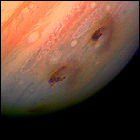 Its collision with the solar system’s largest planet predicted over a year in advance, the fragments of Comet Shoemaker-Levy 9 begin impacting Jupiter’s atmosphere in an astronomical event lasting six days. With Earth-based telescopes watching, as well as cameras and instruments on the Hubble Space Telescope, Galileo and even Voyager 2, huge explosions are witnessed as the cometary chunks slam into Jupiter’s southern hemisphere at over 200,000 miles per hour, leaving dark “scars” larger than the diameter of Earth visible on the planet’s atmosphere and releasing more heat than the surface of the sun. Galileo is still over a year away from arriving at Jupiter.
Its collision with the solar system’s largest planet predicted over a year in advance, the fragments of Comet Shoemaker-Levy 9 begin impacting Jupiter’s atmosphere in an astronomical event lasting six days. With Earth-based telescopes watching, as well as cameras and instruments on the Hubble Space Telescope, Galileo and even Voyager 2, huge explosions are witnessed as the cometary chunks slam into Jupiter’s southern hemisphere at over 200,000 miles per hour, leaving dark “scars” larger than the diameter of Earth visible on the planet’s atmosphere and releasing more heat than the surface of the sun. Galileo is still over a year away from arriving at Jupiter. Unmanned space prove Voyager 1, launched in 1977, surpasses its forerunner Pioneer 10 as the furthest man-made object in space. Due to a sharp increase in its speed imparted by a very close pass by Saturn’s large moon Titan in 1980, Voyager 1 has outrun Pioneer 10, which was launched in 1972. Both vehicles are still returning science data, and Voyager 1 is now 6.5 billion miles from the sun, 70 times further out from the sun than Earth. Voyager’s on-board nuclear power source is expected to keep it active through 2020.
Unmanned space prove Voyager 1, launched in 1977, surpasses its forerunner Pioneer 10 as the furthest man-made object in space. Due to a sharp increase in its speed imparted by a very close pass by Saturn’s large moon Titan in 1980, Voyager 1 has outrun Pioneer 10, which was launched in 1972. Both vehicles are still returning science data, and Voyager 1 is now 6.5 billion miles from the sun, 70 times further out from the sun than Earth. Voyager’s on-board nuclear power source is expected to keep it active through 2020.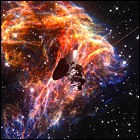 Launched ahead of its identical twin, Voyager 1, in 1977, NASA’s Voyager 2 spacecraft surpasses its 10,000th day in deep space. At 11 billion miles from Earth, Voyager 2 is one of the most distant human-made objects in space, surpassed only by Voyager 1. Both Voyagers are expected to function well into the 2020s, and are expected to have left the solar system to enter interstellar space by then.
Launched ahead of its identical twin, Voyager 1, in 1977, NASA’s Voyager 2 spacecraft surpasses its 10,000th day in deep space. At 11 billion miles from Earth, Voyager 2 is one of the most distant human-made objects in space, surpassed only by Voyager 1. Both Voyagers are expected to function well into the 2020s, and are expected to have left the solar system to enter interstellar space by then.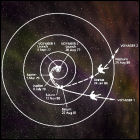 NASA’s Voyager 2 probe, having recently celebrated its 30th anniversary in deep space, sends back observations and instrument readings that lead scientists to a surprising conclusion: the “bubble” of the sun’s solar wind and magnetic influence isn’t spherical or even egg-shaped. Voyager 2′s readings, including the fact that it crossed what should’ve been the boundary of the sun’s outermost influence several times, have revealed that the solar system’s outermost boundary is in flux. Scientists theorize that the “dent” in that bubble is caused by the interstellar magnetic field of the Milky Way galaxy itself. Voyager 2 is now over 10 billion kilometers from the sun – or, to put that in perspective, 80 times further away from the sun than Earth is.
NASA’s Voyager 2 probe, having recently celebrated its 30th anniversary in deep space, sends back observations and instrument readings that lead scientists to a surprising conclusion: the “bubble” of the sun’s solar wind and magnetic influence isn’t spherical or even egg-shaped. Voyager 2′s readings, including the fact that it crossed what should’ve been the boundary of the sun’s outermost influence several times, have revealed that the solar system’s outermost boundary is in flux. Scientists theorize that the “dent” in that bubble is caused by the interstellar magnetic field of the Milky Way galaxy itself. Voyager 2 is now over 10 billion kilometers from the sun – or, to put that in perspective, 80 times further away from the sun than Earth is.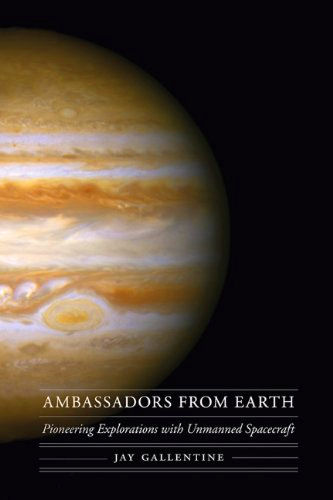 The University of Nebraska Press publishes
The University of Nebraska Press publishes  Dutton Books publishes
Dutton Books publishes  The documentary film
The documentary film  Bradford A. Smith, a research astronomer and former professor of planetary science and astronomy at the University of Arizona, dies at the age of 86 from complications arising from an autoimmune disorder. Smith became a public figure during the peak years of the uncrewed
Bradford A. Smith, a research astronomer and former professor of planetary science and astronomy at the University of Arizona, dies at the age of 86 from complications arising from an autoimmune disorder. Smith became a public figure during the peak years of the uncrewed 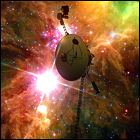 Launched in August 1977 prior to the departure of its sister ship, Voyager 1, NASA’s Voyager 2 space probe exits the heliosphere, the region where the solar wind from Earth’s sun has more influence than the interstellar medium between stars. Unlike Voyager 1, Voyager 2’s plasma science instruments are still working, so the instrument readings indicating a dramatic change in local space are very clear to the vehicle’s ground controllers (Voyager 1’s exit from the heliosphere in 2012 had been much more ambiguous at first). At over eleven billion miles from the Earth, radio signals take more than 16.5 hours to reach or be received from Voyager 2 at the time of its entry into the interstellar medium, and it is expected to return science data through the 2020s. It will pass within two years of the star Ross 248 in 40,000 years.
Launched in August 1977 prior to the departure of its sister ship, Voyager 1, NASA’s Voyager 2 space probe exits the heliosphere, the region where the solar wind from Earth’s sun has more influence than the interstellar medium between stars. Unlike Voyager 1, Voyager 2’s plasma science instruments are still working, so the instrument readings indicating a dramatic change in local space are very clear to the vehicle’s ground controllers (Voyager 1’s exit from the heliosphere in 2012 had been much more ambiguous at first). At over eleven billion miles from the Earth, radio signals take more than 16.5 hours to reach or be received from Voyager 2 at the time of its entry into the interstellar medium, and it is expected to return science data through the 2020s. It will pass within two years of the star Ross 248 in 40,000 years. Astronomer Dr. Frank Drake, one of the founders of SETI (the Search for Extra-Terrestrial Intelligences), dies at the age of 92. His fascinating with searching for life on other worlds began at a young age, and defined much of his life and career. In the 1960s, as part of a lecture, he devised the Drake Equation, a formula for calculating a very rough estimate of the possible number of civilizations capable of communicating across interstellar distances; this equation has been debated and challenged over the years, as well as gaining mainstream recognition after being cited in popular science programming (such as Carl Sagan’s Cosmos) and science fiction as well. In the 1970s, Drake and Sagan joined forces to create the “messages in bottles” affixed to the earliest space probes expected to break free of the solar system, including the Pioneer plaques and the golden records attached to Voyagers 1 and 2.
Astronomer Dr. Frank Drake, one of the founders of SETI (the Search for Extra-Terrestrial Intelligences), dies at the age of 92. His fascinating with searching for life on other worlds began at a young age, and defined much of his life and career. In the 1960s, as part of a lecture, he devised the Drake Equation, a formula for calculating a very rough estimate of the possible number of civilizations capable of communicating across interstellar distances; this equation has been debated and challenged over the years, as well as gaining mainstream recognition after being cited in popular science programming (such as Carl Sagan’s Cosmos) and science fiction as well. In the 1970s, Drake and Sagan joined forces to create the “messages in bottles” affixed to the earliest space probes expected to break free of the solar system, including the Pioneer plaques and the golden records attached to Voyagers 1 and 2.